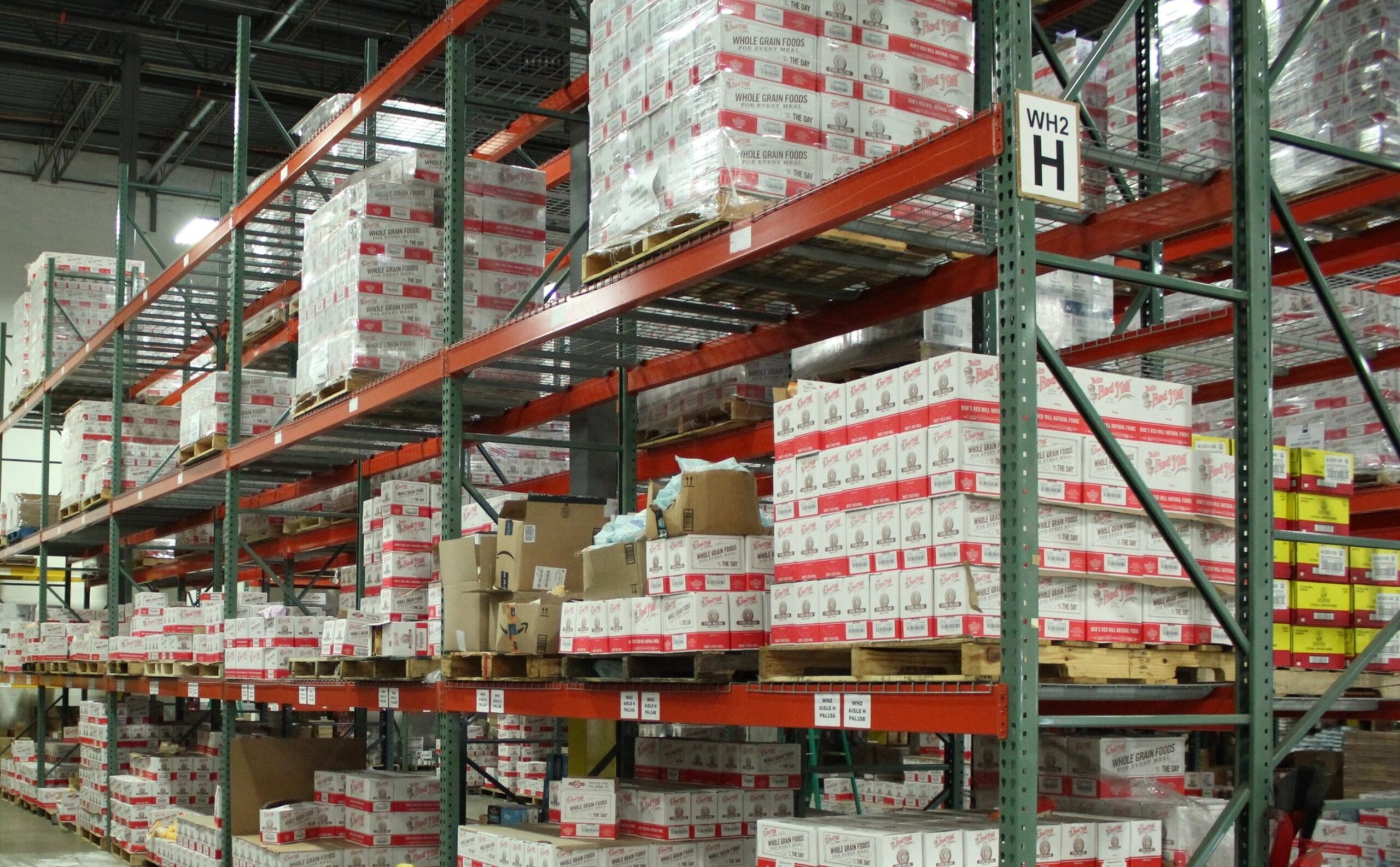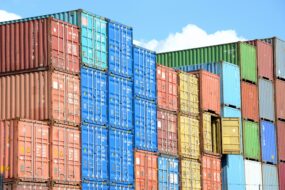Contents

Over my career, I’ve seen my fair share of returns. I once saw a full truckload of Starbucks Frappuccino infested with bugs (due to 1 broken bottle that spread over the corrugate it was sitting on…causing the bugs in it to hatch). I have even seen a truckload of product returned because it contained a live raccoon!
Returns happen in any situation where a customer purchases a product which doesn’t meet their expectations. The return initiates a series of steps to refurbish, donate, or even incinerate the product. Returns aren’t only for single eCommerce products, but extend to full truckloads of things like Gatorade or sugar. These can be costly and have a significant impact on a company’s bottom line and customer experience.
Causes of Returns in the Supply Chain
First, why is a product, a plane, or something else returned? Some of the most common reasons for customer returns include:
eCommerce shipments
- Product defects or quality issues
- Incorrect product delivered
- Wrong size or color
- Change of mind or no longer needed
Bulk shipments
- Shipping or handling damage such as pallets that are tipped over
- Infestation on shipments
- A refrigerated shipment that went above the contracted temperature
Other factors that contribute to product returns include poor customer service, spoiled products, unclear return policies, and a lack of trust in the product or company.
Steps in the Returns Management Process
Effective returns management involves several key steps. These steps include:
- Customer Service: The first step in managing returns is to provide excellent customer service. This includes providing clear return policies, easy-to-follow instructions, and prompt and courteous service to customers who need assistance with a return.
- Reverse Logistics: Once a product is returned, it must be properly handled and transported to a returns facility. This process, known as reverse logistics, can be complex and involves coordinating with various carriers and logistics providers.
- Types of Returns and Management Strategies: There are several types of returns, including defective products, customer remorse, and overstock. Each type of return requires a different management strategy, and it’s essential to have a clear plan in place for handling each type of return.
- Processing of Returns: Once a return is received, it must be processed and evaluated to determine the reason for the return. This process can involve testing the product, inspecting it for damage, and determining whether it can be resold.
- What Happens After an Item is Returned: After a return is processed, the next step is to determine what to do with the returned product. Depending on the reason for the return and the condition of the product, it may be repaired, refurbished, resold, or disposed of.
Benefits of Effective Returns Management
A robust returns process can make or break your customer experience and your company’s profitability. An effective returns management can provide several benefits for companies. These benefits include:
- Reduction of Costs Associated with Returns: By effectively managing returns, companies can reduce the costs associated with handling, processing, and restocking returned products.
- Increased Customer Satisfaction and Loyalty: By providing excellent customer service and making the returns process as easy as possible
- Enhanced Supply Chain Efficiency and Profitability: Effective returns management can also help companies to optimize their supply chain and improve profitability. By analyzing the reasons for returns and implementing strategies to reduce returns, companies can improve their overall supply chain efficiency and reduce costs.
Challenges in Returns Management
The challenges of returns can be incredible and something I have personally experienced running Outbound Fulfillment and during my time as a supply chain consultant and working for large food and beverage manufacturers
Challenges of eCommerce Returns
Think from an eCommerce owner’s perspective of the challenges. They outsource to a fulfillment provider which has a level of standardization to provide the lowest cost so that their product is competitively priced with you.
With returns, there isn’t a lot of standardization that can be planned. Products are of different weights and sizes causing headaches with how to come up with standard storage locations. You don’t know upon intake if the product can be refurbished. Those are just to name a few. Some of the most common challenges include:
- Complexities of Reverse Logistics: Reverse logistics can be a complex and challenging process, particularly for companies with global supply chains. Coordinating with carriers like UPS and logistics providers can be time-consuming and costly.
- Balancing Cost and Efficiency in Returns Management: Companies must balance the cost and efficiency of managing returns to create a good process. Every mile a product travels has a cost to it. If a pair of high-fashion shoes have to travel 500 miles to a refurbishment or fulfillment center, the cost to send it back may not make sense. This can be a delicate balancing act, and companies must continually evaluate their returns process to ensure that they are achieving the optimal balance.
- Managing Returns in a Global Supply Chain: Managing returns in a global supply chain can be particularly challenging due to differences in regulations, customs, and logistics infrastructure.
Challenges of Bulk Shipment Returns
Bulk shipment returns can be just as challenging as eCommerce returns. A quick example I have seen plenty of times are shipments sent to the big box retailers that are tipped over mid-transit causing the forklift driver to have to unload each box manually.
Companies like Walmart have their operation timed so precisely that there is little downtime for a forklift operator between unloads. Thus, Walmart will reject a shipment, creating a return, because it will take 3x as long as a normal unload putting their entire warehouse schedule behind.
PepsiCo may make $4,000 to $8,000 on that shipment in profit, but think about the costs to return it. To order a truckload back can cost between $1,000 to $4,000 depending on market rates, there’s a cost to store it every day, the cost to safely unload it or inspect it, and then there’s the additional cost to send it back to the retailer.
All this to consider that some products only have a 90-day shelf life to get out of a warehouse and it might expire. That’s just 1 example but here are some of the most common challenges with large shipments:
- Defects in the manufacturing process: In manufacturing supply chains, returns can occur when a buyer cancels a purchase order or when a manufacturer produces a defective product that needs to be returned for repairs or replacement. Sometimes a technician may fly out to repair the equipment vs. sending it back.
- Cost of a return: For larger shipments, it may make sense to find a place locally to dump it vs. return it.
- Managing Bulky Returns in a Corporate Setting: A return to a large company is fraught with layers of management that all need to make a decision on what to do with the product. This can take time and additional money due to the layers of bureaucracy one must go through
Technologies and Tools for Returns Management
Technology in Returns is crucial. My company Outbound Fulfillment has only been successful as much as our returns process has been. Some of the most important technologies and tools for returns management include:
- Use of Data Analytics and Tracking Systems: Data analytics and tracking systems can help companies to identify trends in returns and optimize their returns process.
- Automation of Returns Processes: Automation can help to streamline the returns process and reduce the costs associated with manual processing.
- Mobile Apps and Software for Customer Returns: Mobile apps and software can help to make the returns process more convenient for customers and improve communication between the customer and the company.
Examples of Technology in the Returns Process:
- Returnly: Returnly is a returns management software for eCommerce businesses. It allows customers to initiate returns easily and provides merchants with tools for processing and tracking returns. Returnly can also provide instant refunds and exchanges, reducing the amount of time it takes for customers to receive their money back or a replacement product.
- ReverseLogix: ReverseLogix is a comprehensive returns management solution for businesses with larger shipments. It includes features such as return authorization, disposition management, and refurbishment and repair, which can help businesses streamline their returns process and minimize losses.
- Optoro: Optoro is a returns optimization software that uses data analytics to help businesses maximize the value of their returns. It can help businesses determine the best course of action for returned products, such as reselling them on secondary markets or recycling them.
- WorkEQ (formerly ReturnSafe): WorkEQ is a returns management software that focuses on health and safety in the returns process. It includes features such as touchless returns and disinfection protocols to help
Best Practices for Returns Management
To optimize their returns management process, companies should follow several best practices. These include:
- Developing a Comprehensive Returns Policy: Companies should develop a clear and comprehensive returns policy that outlines the conditions for returns, the process for returning a product, and any associated fees or costs.
- Improving Communication and Transparency with Customers: Companies should strive to provide clear and transparent communication with customers regarding their returns process, including tracking information and updates on the status of the return.
- Implementing Continuous Improvement Strategies: Companies should continually evaluate and improve their returns process, leveraging data analytics and customer feedback to identify areas for improvement and optimize the returns process.




